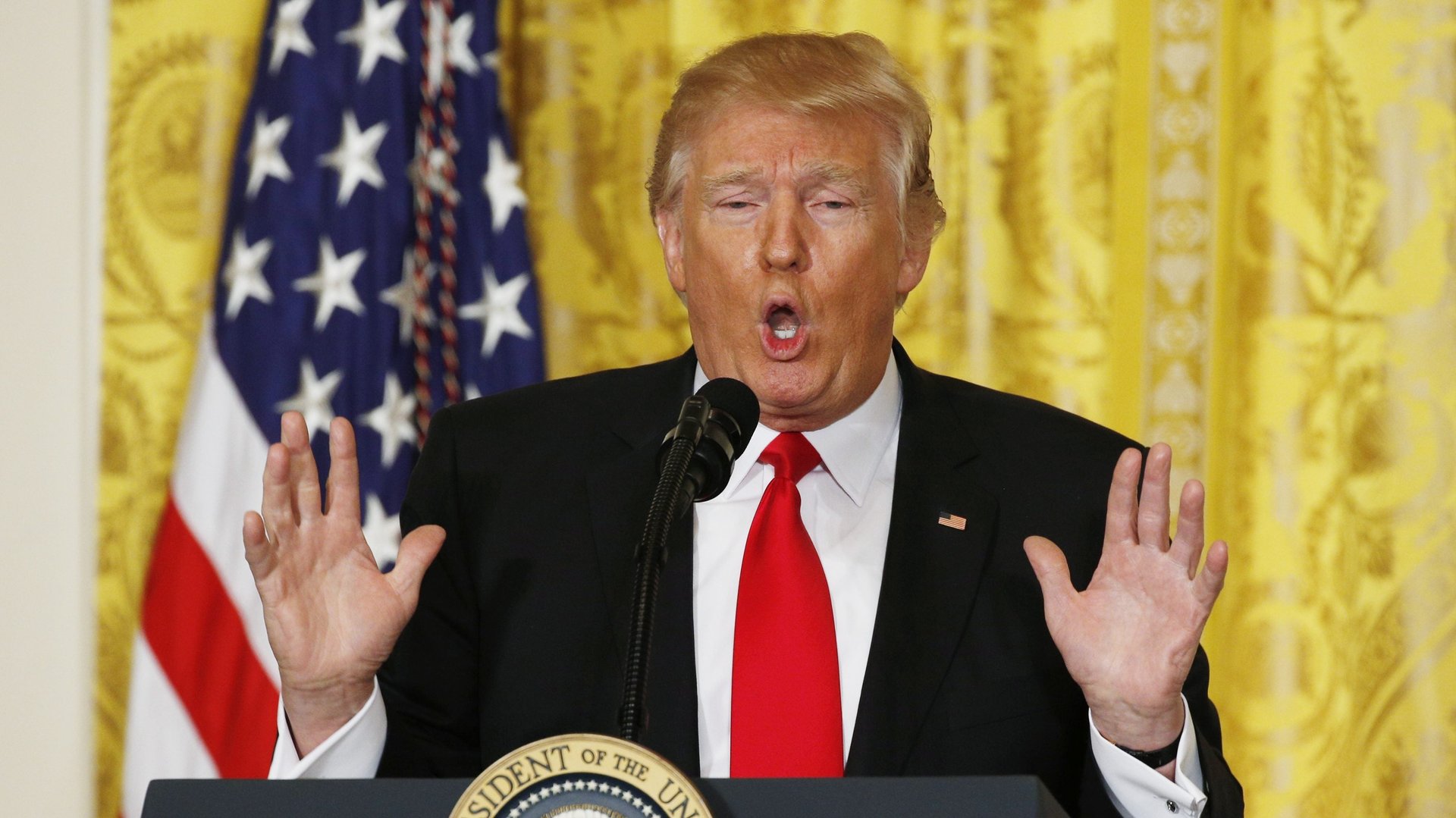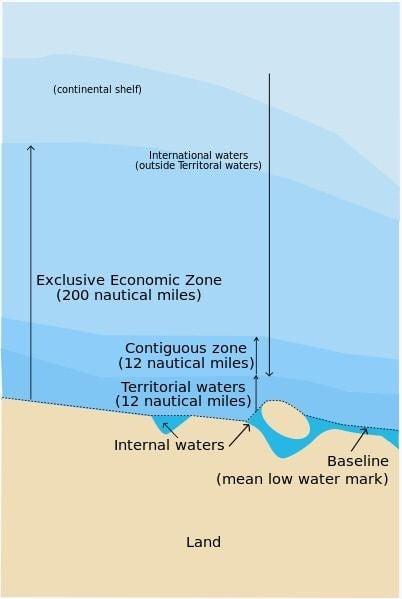What would actually happen if Donald Trump shot that Russian ship “right out of the water”
In a bizarre press conference yesterday, Donald Trump suggested he could boost his popularity by destroying a Russian naval ship operating off the US East Coast—but that he would do the politically unpopular thing and seek a peaceful relationship with Moscow instead.


In a bizarre press conference yesterday, Donald Trump suggested he could boost his popularity by destroying a Russian naval ship operating off the US East Coast—but that he would do the politically unpopular thing and seek a peaceful relationship with Moscow instead.
The US president said the following, making reference to his secretary of state, Rex Tillerson:
“If we could get along with Russia, that’s a positive thing. We have a very talented man, Rex Tillerson, who’s going to be meeting with them shortly, and I told him, I said, ‘I know politically it’s probably not good for me.’ The greatest thing I could do is shoot that ship that’s 30 miles off shore right out of the water. Everyone in this country’s going to say, ‘Oh, it’s so great.’ That’s not great. That’s not great. I would love to be able to get along with Russia. Now, you’ve had a lot of presidents that haven’t taken that tack. Look where we are now.
In fact, shooting the Russian ship “out of the water” would be well outside the bounds of legality, very likely provoke a heavily armed foreign power, and probably would not bring applause from most Americans—certainly not from its intelligence and military communities. The US would face an increased likelihood of similar attacks on its own ships around the globe, with Russia and other potential enemies drawing justification from the US’s aggressive, out-of-the-blue act.
Indeed, the ship was neither breaking international law nor doing anything out of the ordinary. As coast guard captain Andrew Tucci told the New York Times (paywall), a foreign military ship passing off the US coast “may not be a daily occurrence, but it is not unusual.” The Viktor Leonov stayed at least 30 miles offshore at all times, and was “in international waters for the entirety of a transit, so it is not a violation of American sovereignty in any way.”

Under prevailing international norms as laid out by the United Nations Convention on the Law of the Sea (UNCLOS), a country’s territorial sea extends out 12 nautical miles (22 km, 14 miles) from the coast. Here a country is free to set laws and regulate use, though a foreign military vessel can still make “innocent passage” whereby it does nothing threatening and carries on its way.
After that is a contiguous zone (another 12 nautical miles) where a nation can continue setting some laws. Beyond that is the exclusive economic zone (EEZ), which is where the Viktor Leonov was.
The EEZ, extending out 200 nautical miles (370 km; 230 miles) is considered to be international waters under UNCLOS, though within it a nation does have sole rights to extract natural resources from within the waters (for example fish) and below the seabed (including oil and natural gas).
US Navy warships routinely operate within the EEZs of other nations, and the US has no issue with foreign warships doing the same within America’s EEZ. In July 2014, for instance, China sent an intelligence-gathering ship into the EEZ off Hawaii to observe biennial naval exercises. The US did not protest, because it does the same sort of thing in China’s EEZ. Russia conducts similar operations.
China, though, has something of a double standard, and has been growing more aggressive at sea in recent years. It views an EEZ as more like territorial waters (pdf, p. 16), and has often harassed US ships operating in its own EEZ. One thing it has not done, of course, is blow a US warship in its EEZ “out of the water.” Beijing knows its more territorial approach to EEZs is not shared by the US and most other nations.
But if the US itself attacked a Russian ship in its own EEZ, then all bets are off outside China’s coast, and in the South China Sea, a key geopolitical flashpoint where China has been especially assertive.
Trump is seemingly unaware of—or perhaps he’s too impatient for—the finer points of maritime norms. Unfortunately, much revolves around such nuances.